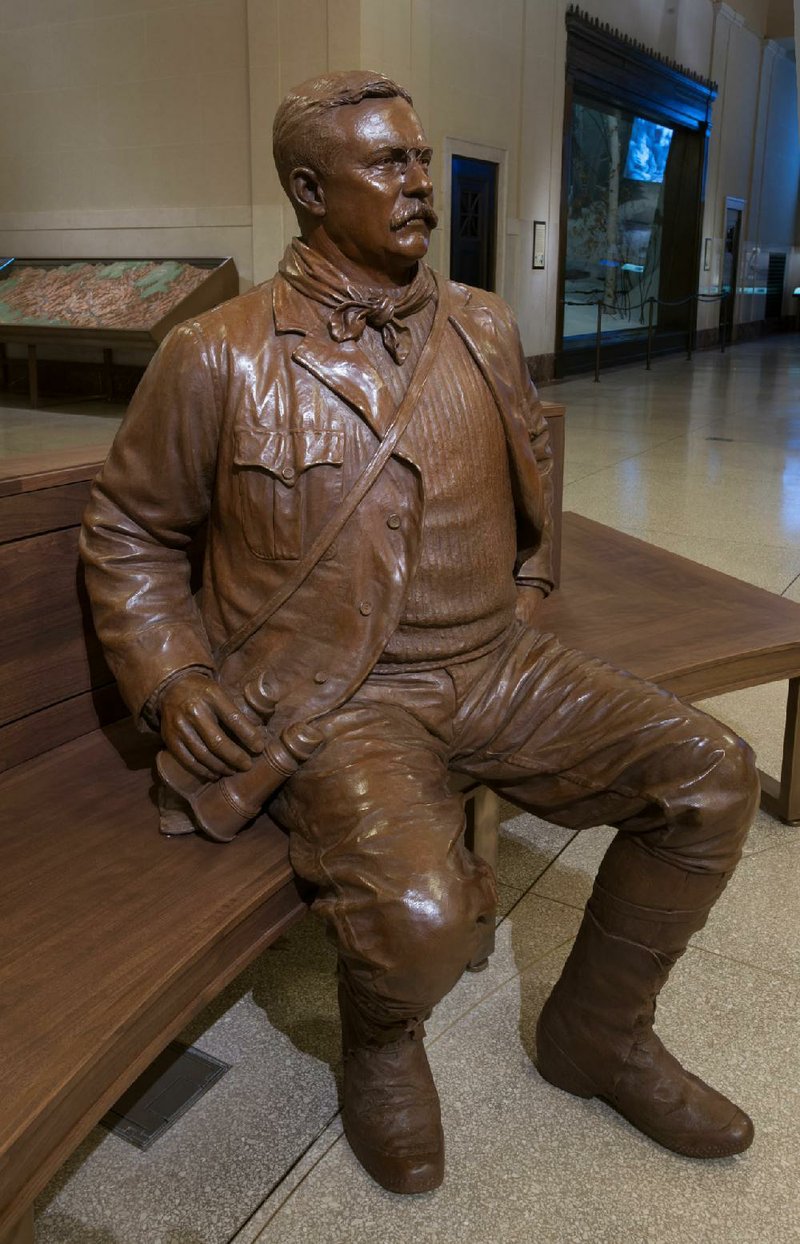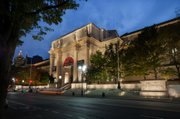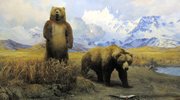NEW YORK - Anyone who has ever hugged a teddy bear has sampled some of the legacy of Theodore Roosevelt, the U.S.’ “conservation president.”
Cuddly “Teddy’s bears” were first designed to commemorate an occasion in 1902 when Roosevelt refused to shoot an exhausted black bear that had been chased by a group of sportsmen and tied to a tree. More realistic versions of the bears and other animals in the wild habitats Roosevelt helped to preserve can be seen in the brilliantly restored life-size dioramas that reopened in the American Museum of Natural History’s Hall of North American Mammals on Oct. 27, Roosevelt’s 154th birthday. The North American Mammals hall was part of the museum’s three-year, $40 million restoration of the Theodore Roosevelt Memorial Hall.
A visit to the museum not only gives the chance to learn about the colorful 26th president but to enjoy Manhattan’s Upper West Side with its handsome brownstones and apartment buildings and Lincoln Center, home of the Metropolitan Opera, the New York Philharmonic and more.
This section of the city is a cornucopia for architecture and music lovers, and for families.
The Theodore Roosevelt Rotunda and Memorial Hall were dedicated in 1936 by President Franklin D. Roosevelt, Teddy’s distant cousin, to serve as New York state’s official memorial to its 33rd governor, elected in 1898.
Two years later, Theodore Roosevelt was elected U.S. vice president on the Republican ticket. In 1901 at the age of 42, he became president when President William McKinley was assassinated.
The restoration of the two-story Memorial includes the Museum’s Central Park West facade, now illuminated for the first time in decades to highlight its grand architecture by John Russell Pope, also the architect of the Jefferson Memorial in Washington.
The impressive rotunda, the museum’s main entrance, is a New York interior landmark. It measures 67 by 120 feet, topped by a 100-foot-high octagonal coffered dome. The newly renovated spaces showcase painter William Andrew Mackay’s expertly conserved historical murals depicting milestones in Roosevelt’s public life, including the building of the Panama Canal and the awarding of the Nobel Peace Prize. These are some of the largest indoor murals in a New York public building, covering an area of more than 5,200 square feet.
Also in residence in the rotunda are two of the reasons why families love this museum - the towering figure of a Barosaurus dinosaur rearing up to protect its young from a figure of an attacking Allosaurus predator. The Barosaurus skeleton, said to be the tallest freestanding dinosaur mount in the world, is composed of replica bones cast from actual fossils. As part of the restoration, the display was divided in two, allowing visitors to walk between the famous combatants for the first time.
The Theodore Roosevelt Memorial Hall on the lower level features a new exhibition with never-before-displayed artifacts that trace Roosevelt’s life in four stages: Young Naturalist with an early passion for nature; Firsthand Observer whose experience as a rancher in North Dakota impressed him with the need to protect animals; the Conservation President who placed some 230 million acres of land under federal protection; and Lifelong Explorer detailing his adventurous post-presidency expeditions.
At the center of the hall is a new sculpture inspired by a 1903 photo, showing a friendly Roosevelt seated on a bench, as though inviting visitors to have a seat beside him while contemplating his legacy. The sculpture was created by Studio EIS in Brooklyn.
Young visitors may be fascinated to learn more about Teddy’s boyhood. As a nearsighted and asthmatic child growing up in Manhattan, summer vacations in upstate New York provided a relief from illness for Roosevelt and whetted his appetite for the outdoors. In 1867, two years before the museum was founded, 8-year-old Teddy created his own Roosevelt Natural History Museum in his family’s New York home. The collection included birds’ nests, insects and mouse skeletons, and it expanded to include some 250 specimens - items Roosevelt later donated to the Museum of Natural History and the Smithsonian Institution. Some of his donations are on display, including three African plovers and a snowy owl.
The hall also shows footage from filmmaker Ken Burns’ The National Parks: America’s Best Idea as well as a touch-screen timeline that highlights important milestones in Roosevelt’s life.
The Memorial Hall leads into the newly restored Hall of North American Mammals. The giant dioramas afford a close-up view of impressive animals such as the Alaska brown bear, American bison, big horn sheep and moose.The dioramas are amazingly lifelike and have never looked better. Some of the originals date to 1942 and had faded with time. Artists, conservators, taxidermists and designers have worked to painstakingly re-color faded fur, dust delicate leaves and restore the background paintings. Several dioramas re-create scenes from national parks and monuments that Theodore Roosevelt helped establish, including Mount Rainier, Crater Lake, the Grand Tetons, Mesa Verde, and the Grand Canyon. New text accompanying each diorama offers the latest scientific information.
All of this is only part of the reason why families frequent the American Museum of Natural History. The fourth floor dinosaur galleries are legendary, holding the world’s largest collection of dinosaur fossils, and the famous Blue Whale in the Hall of Ocean Life is a replica of the largest animal living or extinct. Many kids also love the elephants in the Hall of African Mammals, the Hall of Meteorites with the largest meteorite on display in the world, and the spectacular Rose Center for Earth and Space and its Hayden Planetarium shows.
Children ages 5 to 12 can visit the Discovery Room, with a special array of artifacts, specimens, puzzles and scientific challenges. They can hunt for animals in a replica African baobab tree or explore minerals, arthropods and skulls in cabinets full of fascinating specimens.
In the unlikely event that more family activity is needed, the recently renovated New York Historical Society nearby includes the DiMenna Children’s History Museum on the lower level, a chance to experience a bit of the lives of New York kids in years past.And not far away is the Children’s Museum of Manhattan, the city’s only museum dedicated to younger children, including a fourth floor devoted to tots age 4 and under.
A visit to the Upper West Side is not complete without a stroll past the handsome twin-tower apartment buildings along Central Park West and the brownstone-lined side streets. Broadway at 80th Street boasts one of the city’s most legendary food emporiums, Zabar’s, whose cheese, deli, bread and coffee departments dazzle with choice. By night, Lincoln Center beckons to the south with a full slate of music, dance and theater.
It could take several visits to take in all of the enticements offered by this historic New York neighborhood.
FOR MORE INFORMATION
American Museum of Natural History, Central Park West at 79th Street, New York, N.Y. 10024; phone: (212) 769-5100, amnh.org. Open daily, 10 a.m.-5:45 p.m.
New York City: NYC & Company; nycgo.com.
Travel, Pages 50 on 04/28/2013



